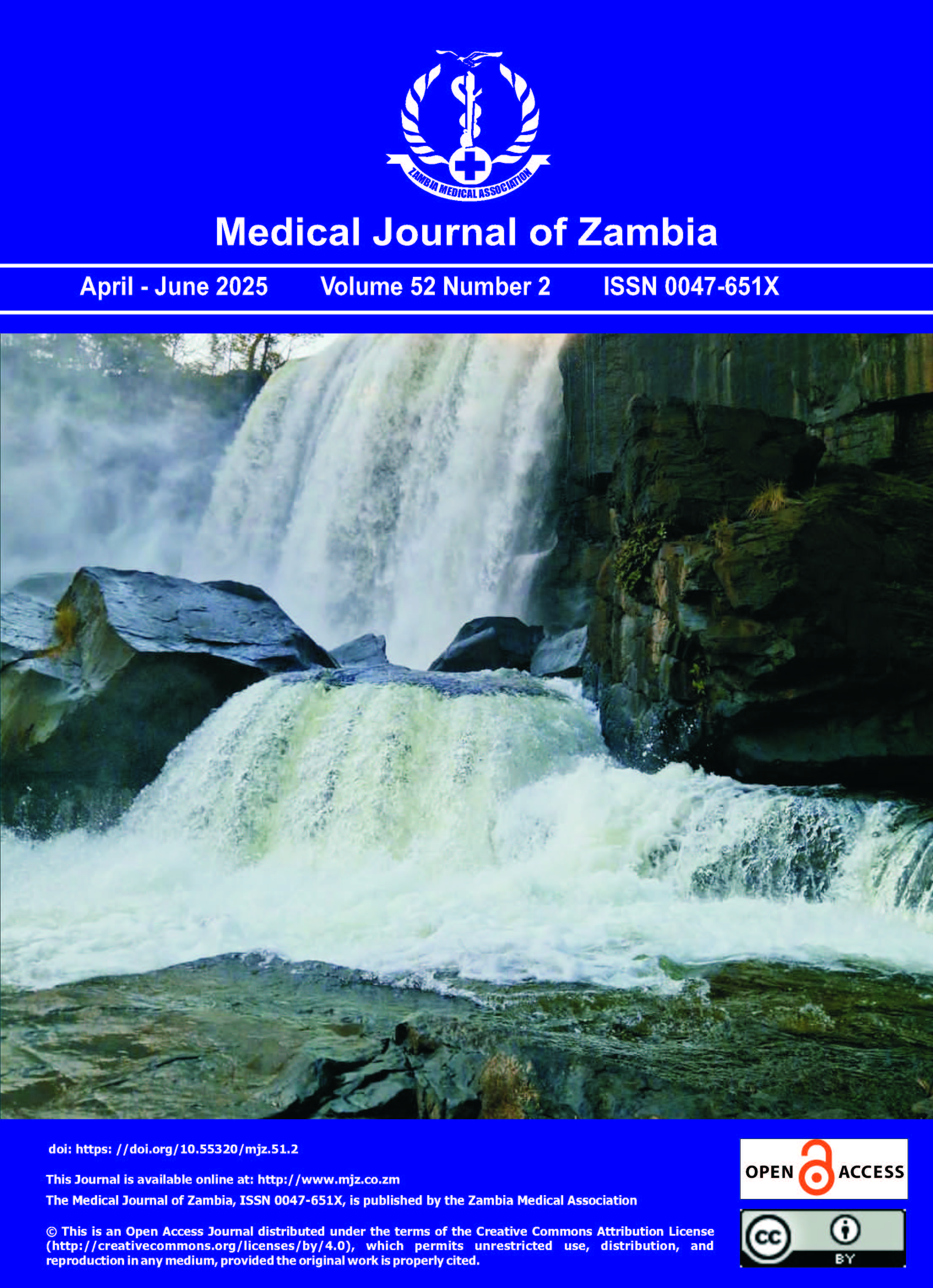Functional Outcomes of Upper Limb Long Bone Fractures in Children aged 6-12 years at Chawama First Level Hospital in Lusaka, Zambia
DOI:
https://doi.org/10.55320/mjz.52.2.618Keywords:
functional outcomes, upper limb, long bone fractures, childrenAbstract
Background: Fractures in children represent a major global health problem and account for 10-25% of all childhood injuries. Management of these fractures includes operative and non-operative interventions. However, functional outcomes vary depending on the interventions used and how soon rehabilitation is instituted post-injury.
Objective: The aim of this study was to determine the functional outcomes of upper limb long bone fractures in children aged 6-12 years presenting at Chawama General Hospital in Lusaka, Zambia.
Methods: A cross-sectional study design was adopted for this study using quantitative methods. The study was conducted among 80 randomly selected children aged 6-12 years presenting at fractures at Chawama General Hospital for rehabilitation services. Data were collected using a modified researcher-assisted questionnaire adapted from the International Classification of Functioning (ICF). Using SPSS v27.0, descriptive and inferential statistical analyses were performed at the 0.05 level of significance. All ethical principles were upheld accordingly.
Results: The majority of participants were aged 6–8 years (50%); 65% were males. Most of the fractures were caused by falls (45%), followed by trauma (35%), and child abuse (15%). Post-fracture presentation included pain (100%), joint stiffness (80%), muscle weakness (70%), numbness (45%), and deformity (35%). All fractures were managed conservativelyusing collar and cuffs (58%), plaster of Paris casts (23%) and arm slings (10%). Post-fracture, 60% of the participants were able to eat using the affected limb; 30% were able to handle objects; 7.5% were able to dress; and 2.5% were able to bath.
Conclusion: Tailoring the treatment approach to individual patient needs can help reduce complications and enhance recovery outcomes. Additionally, caregivers should be informed about the risks of re-fracture and the importance of proper rehabilitation to ensure the child’s full recovery and avoid future issues related to the injury.
Downloads
Downloads
Published
Issue
Section
License
Copyright (c) 2025 Medical Journal of Zambia

This work is licensed under a Creative Commons Attribution-NonCommercial 4.0 International License.









